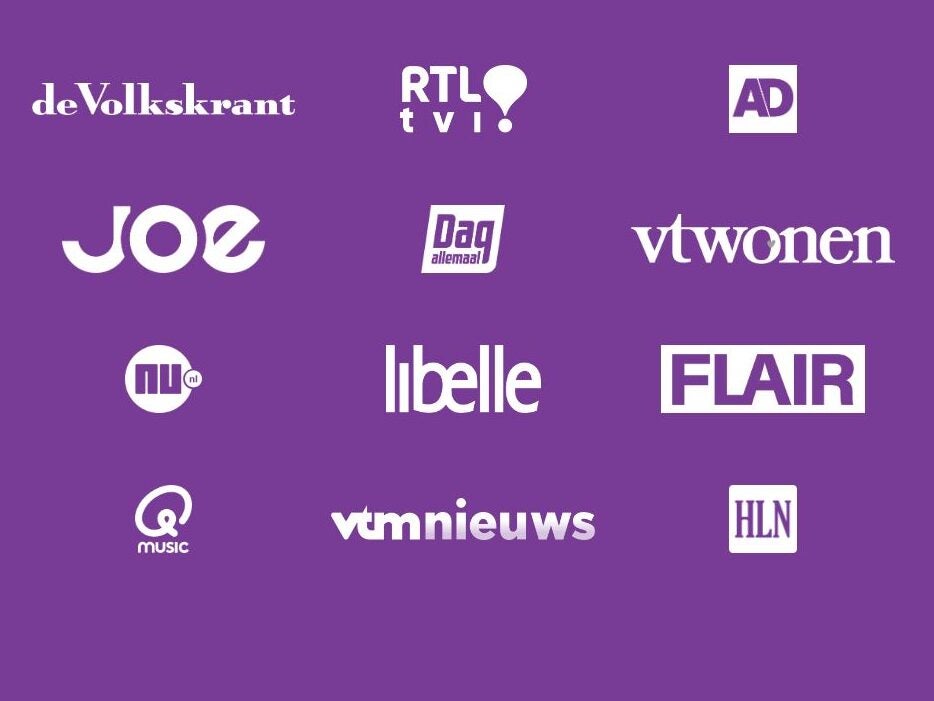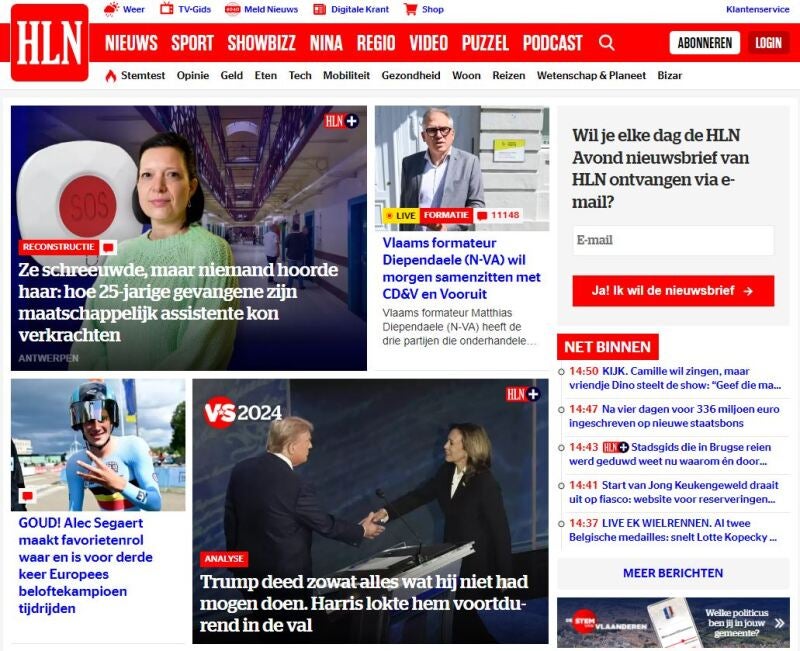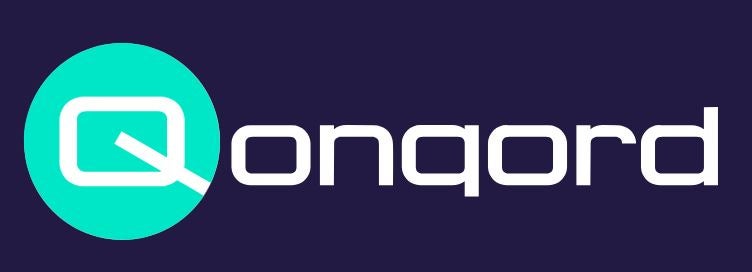
Failing technology put daily print deadlines at risk at a major Dutch/Belgium media house, wasting time and resources better spent on its digital transition, until the group invested in new tech that not only streamlined production but saw digital ad revenues skyrocket.
DPG Media – which has more than 120 titles including newspapers and magazines – faced frequent software crashes while building and designing pages using a long-established print publishing software provider as part of its tech stack.
These failures put a serious strain on the group’s core print operation, which serves 1.2m daily print subscribers in the week and 1.6m on a Saturday across a network of titles.
Erik Louwes, programme manager at DPG Media, said the group was reliant on its expert IT team and staff working overtime to keep things functional after “the whole system crashed”.
“We just had to hope that it would work again… and that we’d be on time for the printing press,” he said. “It was horrible… sometimes I called my publisher and said: ‘I’m not sure we’ll have newspapers for tomorrow morning.’”
DPG Media needed to find an integrated print and digital publishing system which worked and opted for Qonqord, which offers a modular platform that aims to optimise content creation and publishing processes. Netherlands-based Qonqord announced a major expansion into the UK market earlier this year with the acquisition of Evolved Media.
For DPG Media, this modular approach meant it could keep its existing tech solutions that were working, while switching to Qonqord and WoodWing’s modular approach for planning, workflow and digital asset management and Adobe InDesign for page building and design.
WoodWing Studio and WoodWing Assets are two of the solutions offered by Qonqord. Studio allows editors to create content in a media-neutral editor drawing in images, video and illustrations from the WoodWing digital assets management system. The studio allows editors to publish easily from one platform to website, Facebook, Instagram and apps. It is also integrated with Adobe Indesign allowing print pages to be quickly created using pre-set templates.
The new system has delivered significant efficiency gains across DPG Media’s newspaper and magazine titles and also in the digital production process.

Digital advertising revenue up 250% in five years
Since partnering with Qonqord five years ago, DPG Media has had a reliable and streamlined print process, allowing it to focus on making digital pay through a mix of subscriptions and premium paywalls across its newspaper and magazine titles.
Louwes said: “When you have a good print system that works, then you’re able to have more focus on digital. We are able to produce the newspaper more efficiently, with fewer people, and that’s very important for the future of our publishing house.”
In the five years to 2023 (the latest available annual figures), DPG Media’s digital advertising turnover grew by 250% to €207m, which the group, headquartered in Antwerp, puts partly down to the growth of its own platform for advertisers: DPG Network.
DPG Media reported total revenues of €1.7bn in 2023. Digital subscriptions were up 10% to €176m, making up for print decline. Reader revenue for the year totalled €859m, with 2.9m subscribers across print and digital. The group also offers TV, radio and streaming services.
Mainting print affordability and quality is key
In the Netherlands, there is still a strong tradition of people subscribing to a print newspaper, while in Belgium single copy sales are more prevalent. Both, like everywhere, are seeing digital news consumption increasing in the face of declining print circulations.
“We have to make that transition to digital and everybody understands it and wants to do it,” said Louwes. “WoodWing and Qonqord understand that… and they want to help.”
The group has shifted its focus to creating more “digital value” for consumers, DPG Media chief executive Erik Roddenhof said in a release accompanying its 2023 annual report.
“Digital value creation starts with the consumer,” he said. “A consumer who comes more often and stays with us longer is more willing to become a subscriber. We need to offer even more value to consumers.”
But while “digitalisation” is the group’s “key objective”, according to Roddenhof, he said “a lot is being done to maintain the quality and affordability of our traditional media outlets”. The group’s flagship national daily De Volkskrant has a circulation of more than 337,000, while regional tabloid daily AD, which covers Rotterdamm, puts out 349,000 copies a day. In 2021, De Volkskrant was named the world’s best designed newspaper, beating competition from the New York Times, Washington Post and Die Zeit.
Stories need to be edited just once, for digital and print
One of the major changes DPG Media is looking to make as part of its digital transition is to shift focus from print to digital in terms of editing content. The current process sees stories published online with some editing, before being fully edited again for the print newspaper.
“We want to change that,” said Louwes. “The editing has to be for digital [first], and then you don’t need to have editing for print. Right now we have double work – we’ll do the editing for digital very quickly, and not good enough, and then we have a lot of editors to make it perfect for the newspaper.
“We have to swap that so the editing at the beginning of the content process is perfect, and then we’ll have a lot of stories for the newspaper. And with those good stories, which they won’t need to edit [again], the team will make the newspaper.”
For Louwes, himself a former journalist, it’s the stories that are the key to success, not the format. “The journalism is the most important thing we have to do and… it has to be distinct from other [news] websites,” he said. “You have to be the best in journalism.
“And yes it differs when it’s for the [print] newspaper, because the subscription earns much more money, but for digital it’s always important to have better journalism that people want to pay for. We have to be better and quicker than other news sites.”
For DPG Media, the transition to digital isn’t simply a way to boost earnings, it’s existential – it’s about future-proofing the business against the long-forecast demise of print. Despite print still making up a sizeable chunk of the group’s annual revenue, Louwes admits: “I think there will be a time that we don’t print newspapers, but I’m not sure when.”
He said the act of reading a printed newspaper compared to a news website was different, not only as a physical experience but in the round-up versus rolling news coverage approach. “When you close a news website, you’re worried and think ‘I’m missing out on news’, but when you read the newspaper, you think ‘I’m up-to-date’,” he said.
But there’s also an undeniably romantic idea to print that still lingers.
“Every morning a subscriber gets their newspaper and there’s nothing else but tea or coffee on the table when they start their day. That’s so unique… I think people like to have it,” said Louwes. “I hope it is a long time [before print is dead].”
Email pged@pressgazette.co.uk to point out mistakes, provide story tips or send in a letter for publication on our "Letters Page" blog

